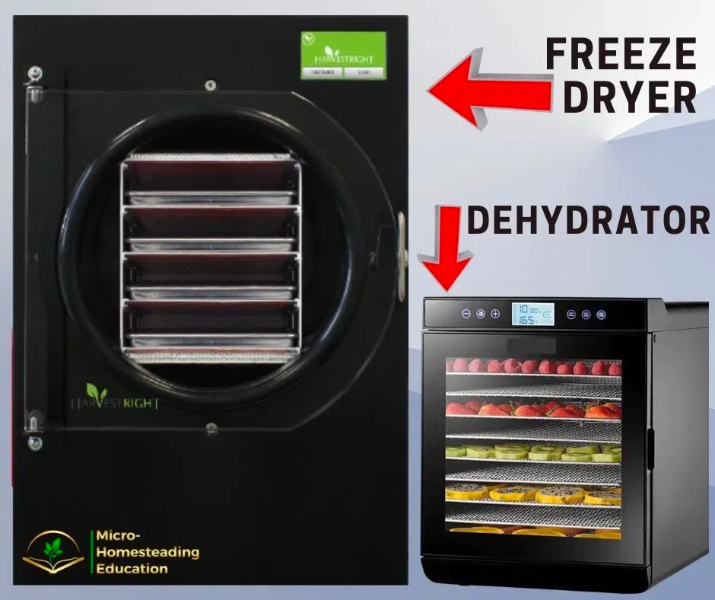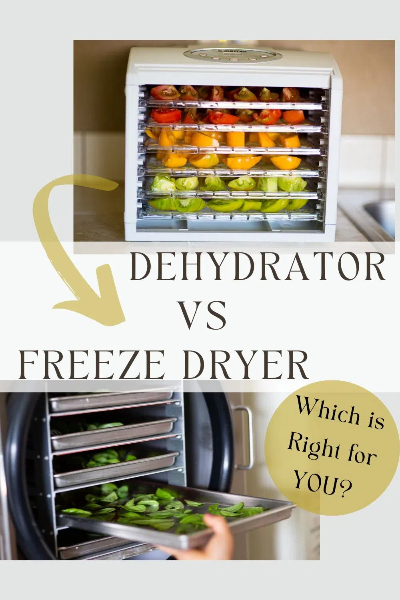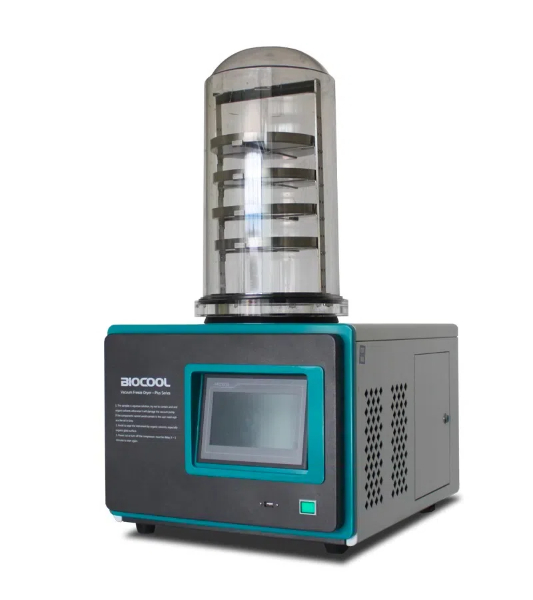
Content Menu
● Introduction
● Understanding Freeze Drying Technology
>> Advantages of Freeze Drying
>> Disadvantages of Freeze Drying
● The Food Dehydration Process
>> Advantages of Food Dehydration
>> Disadvantages of Food Dehydration
● Comparing Freeze Dry Machines and Food Dehydrators
>> 1. Moisture Removal Efficiency
>> 2. Nutritional Value Retention
>> 3. Texture and Rehydration
>> 4. Shelf Life
>> 5. Versatility
>> 6. Cost and Accessibility
>> 7. Energy Consumption and Processing Time
● Choosing the Right Method for Your Needs
● Tips for Successful Food Preservation
● The Future of Food Preservation
● Conclusion
● Frequently Asked Questions
>> 1. Can freeze-dried foods be rehydrated to their original state?
>> 2. How long do dehydrated foods typically last?
>> 3. Is it safe to freeze dry raw meat?
>> 4. Can I use a regular freezer instead of a freeze dryer?
>> 5. Which method is better for preserving herbs: freeze drying or dehydration?
Introduction
In the world of food preservation, two technologies stand out for their ability to extend the shelf life of various foods: freeze dry machines and food dehydrators. Both methods have gained popularity among home cooks, preppers, and food enthusiasts alike. This comprehensive guide will delve into the intricacies of freeze drying and dehydration, comparing their processes, benefits, and drawbacks to help you make an informed decision about which method best suits your needs.
Understanding Freeze Drying Technology
Freeze drying, also known as lyophilization, is a sophisticated process that removes moisture from food while preserving its nutritional value and flavor. This method involves three main steps:
1. Freezing: The food is rapidly frozen to temperatures as low as -40°F (-40°C).
2. Primary drying: The frozen water in the food is sublimated, turning directly from ice to vapor under vacuum conditions.
3. Secondary drying: Any remaining bound water is removed through desorption.
The result is a product that retains its original shape, color, and most importantly, its nutritional content. Freeze-dried foods are lightweight, have a long shelf life, and can be easily rehydrated.

Advantages of Freeze Drying
- Superior retention of nutritional value
- Extended shelf life (up to 25 years for some foods)
- Preservation of original flavor and texture
- Lightweight and easy to store
- Versatility in preserving a wide range of foods, including meats, dairy, and complete meals
Disadvantages of Freeze Drying
- High initial equipment cost
- Longer processing time (20-40 hours on average)
- Higher energy consumption
- Requires more technical knowledge to operate
The Food Dehydration Process
Food dehydration is a more traditional and straightforward method of preserving food. It involves removing moisture from food using heat and air circulation. The process typically follows these steps:
1. Preparation: Food is washed, sliced, and pre-treated if necessary.
2. Arrangement: The prepared food is placed on trays in a single layer.
3. Drying: Warm air circulates around the food, gradually removing moisture.
4. Conditioning: The dried food is allowed to cool and equalize any remaining moisture.
Dehydrated foods are compact, lightweight, and have a significantly extended shelf life compared to fresh produce.
Advantages of Food Dehydration
- Lower initial equipment cost
- Simpler process, easier to learn and use
- Shorter processing time (8-12 hours on average)
- Lower energy consumption
- Suitable for a wide range of fruits, vegetables, and herbs
Disadvantages of Food Dehydration
- Less effective moisture removal (typically 80-90%)
- Shorter shelf life compared to freeze-dried foods
- Some loss of nutritional value due to heat exposure
- Limited effectiveness for meats, dairy, and complete meals

Comparing Freeze Dry Machines and Food Dehydrators
To help you make an informed decision, let's compare these two food preservation methods across several key factors:
1. Moisture Removal Efficiency
Freeze dry machines are the clear winner in terms of moisture removal. They can extract up to 98-99% of the moisture from food, while dehydrators typically remove 80-90%. This higher efficiency contributes to the longer shelf life of freeze-dried foods.
2. Nutritional Value Retention
Freeze drying is superior in preserving the nutritional content of foods. The low-temperature process and absence of liquid water during drying help maintain vitamins, minerals, and enzymes. Dehydration, which uses heat, can lead to some nutrient loss, particularly in heat-sensitive vitamins.
3. Texture and Rehydration
Freeze-dried foods maintain their original structure at a cellular level, resulting in a crisp, lightweight texture that rehydrates quickly and fully. Dehydrated foods often have a chewier texture and may not rehydrate as completely, sometimes resulting in a slightly different texture from the original food.
4. Shelf Life
The shelf life of preserved foods is a crucial factor for many users. Freeze-dried foods can last up to 25 years when properly packaged and stored, making them ideal for long-term food storage. Dehydrated foods typically have a shelf life of 1-5 years, which is still a significant improvement over fresh produce but falls short of freeze-dried options.
5. Versatility
While both methods can handle a wide range of foods, freeze drying excels in preserving meats, dairy products, and even complete meals. Dehydrators are more limited and are best suited for fruits, vegetables, and herbs. Some foods, like fatty meats or high-oil content foods, are challenging to dehydrate effectively.
6. Cost and Accessibility
Food dehydrators are generally more affordable and accessible to the average consumer. Entry-level models can be found for under $100, with high-end units costing a few hundred dollars. Freeze dry machines, on the other hand, are a significant investment, with home units typically costing several thousand dollars.
7. Energy Consumption and Processing Time
Dehydrators are more energy-efficient and have shorter processing times, usually completing a batch in 8-12 hours. Freeze dryers consume more energy and can take 20-40 hours to process a single batch, depending on the food and quantity.
Choosing the Right Method for Your Needs
When deciding between a freeze dry machine and a food dehydrator, consider the following factors:
1. Budget: If cost is a primary concern, a food dehydrator is the more accessible option for most people.
2. Storage goals: For long-term food storage or emergency preparedness, a freeze dryer's superior shelf life may be worth the investment.
3. Types of food: If you primarily want to preserve fruits and vegetables, a dehydrator may suffice. For a wider range including meats and complete meals, a freeze dryer is more versatile.
4. Space and energy considerations: Dehydrators are generally smaller and more energy-efficient, making them suitable for regular use in most kitchens.
5. Time and convenience: If you prefer a quicker, simpler process, dehydration might be the better choice.
Tips for Successful Food Preservation
Regardless of which method you choose, here are some tips to ensure the best results:
1. Start with high-quality, fresh ingredients.
2. Properly clean and prepare foods before preservation.
3. Cut foods into uniform sizes for even drying.
4. Follow recommended drying times and temperatures for each food type.
5. Store preserved foods in airtight containers in a cool, dark place.
6. Label containers with the contents and date of preservation.
7. Regularly inspect stored foods for any signs of spoilage.
The Future of Food Preservation
As technology advances, we can expect to see improvements in both freeze drying and dehydration technologies. Future developments may include:
- More energy-efficient freeze dryers for home use
- Smart features and app integration for monitoring and control
- Hybrid machines that combine freeze drying and dehydration capabilities
- Improved packaging solutions for extended shelf life
These advancements will likely make food preservation even more accessible and efficient for home users, contributing to reduced food waste and increased self-sufficiency.
Conclusion
Both freeze dry machines and food dehydrators offer valuable solutions for extending the shelf life of foods. While freeze drying provides superior results in terms of nutrient retention, texture, and longevity, it comes at a higher cost and requires more time and energy. Food dehydration, on the other hand, offers a more affordable and straightforward approach to food preservation, albeit with some compromises in shelf life and versatility.
Ultimately, the choice between a freeze dryer and a dehydrator depends on your specific needs, budget, and the types of foods you wish to preserve. By understanding the strengths and limitations of each method, you can make an informed decision that aligns with your food preservation goals.
Whether you choose to invest in a freeze dry machine or opt for the simplicity of a food dehydrator, both methods contribute to a more sustainable approach to food consumption, reducing waste and allowing you to enjoy your favorite foods year-round.

Frequently Asked Questions
1. Can freeze-dried foods be rehydrated to their original state?
Answer: Yes, freeze-dried foods can be rehydrated to closely resemble their original state. The process of freeze-drying preserves the cellular structure of the food, allowing it to reabsorb water efficiently. To rehydrate, simply add warm or cold water to the freeze-dried food and wait for a few minutes. The food will regain much of its original texture, flavor, and nutritional value.
2. How long do dehydrated foods typically last?
Answer: The shelf life of dehydrated foods varies depending on the type of food and storage conditions. Generally, properly dehydrated and stored foods can last anywhere from 6 months to 5 years. Fruits and vegetables tend to last longer, while meats have a shorter shelf life. To maximize longevity, store dehydrated foods in airtight containers in a cool, dark, and dry place.
3. Is it safe to freeze dry raw meat?
Answer: Yes, it is safe to freeze dry raw meat. The freeze-drying process removes moisture that bacteria need to survive, effectively preserving the meat. However, it's crucial to handle raw meat safely before and after freeze-drying. Always use clean equipment, freeze the meat quickly to prevent bacterial growth, and store the freeze-dried meat properly. When rehydrating, treat it as you would fresh raw meat in terms of cooking and food safety practices.
4. Can I use a regular freezer instead of a freeze dryer?
Answer: No, a regular freezer cannot replace a freeze dryer. While both involve freezing, freeze drying requires a vacuum environment and precise temperature control to sublimate the ice directly into vapor. A regular freezer only freezes the food, which doesn't remove moisture or preserve it long-term. Freeze dryers are specialized equipment designed specifically for the lyophilization process.
5. Which method is better for preserving herbs: freeze drying or dehydration?
Answer: Both methods can effectively preserve herbs, but they offer different results. Freeze drying is superior for maintaining the color, flavor, and nutritional content of herbs. It also results in a more delicate, crisp texture that crumbles easily. Dehydration is simpler and more cost-effective, producing herbs that retain much of their flavor but may lose some color and have a slightly different texture. For the best flavor and longest shelf life, freeze drying is preferable. However, dehydration is a perfectly acceptable method for most home herb preservation needs.












